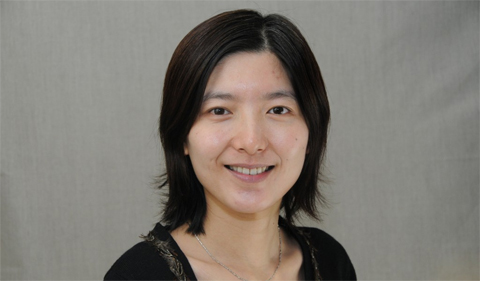Ohio University alum Dr. Juan Ding continues to follow a translational path of “bench to bedside” and the philosophy of her Ph.D. adviser and mentor Dr. John Kopchick, Goll Ohio Eminent Scholar.
Ding is a 2009 alum of the interdisciplinary Ph.D. program in Molecular and Cellular Biology and Biological Sciences.
Kopchick, known for promoting a culture in his lab that champions the idea that basic science should translate into useful outcomes, has clearly influenced Ding’s career.
While continuing to get funding for her research and publishing, Ding is now working toward treating patients with eye disease even as she continues her research.
“While research has been going on well, I have now sought to gain more clinical background by joining the Accelerated Optometry degree program at New England College of Optometry. I will graduate in 2017, and my plan is to see patients with various eye problems and do research to come up with new therapies to treat patients.”
As a student, her research focused on biomarkers of growth hormone and aging. After earning her Ph.D., she continued for two more years working in Kopchick’s lab as a post-doctoral research associate, where she continued to focus on growth hormone and insulin-like growth factor-1 (IGF-1) related to aging, insulin resistance and diabetes. In 2011 Ding accepted a post-doctoral fellowship working with Dr. David Sullivan at the Schepens Eye Research Institute, a Harvard Medical School affiliate. She credits her thorough training in the areas of endocrinology, molecular and cellular biology, and an interest in age-related diseases, in preparing her for the move.
While at the Institute, Ding’s research focused on the study of eye health, specifically dry eye disease. In 2011 she was awarded the ARVO/Vistakon Dry Eye Fellowship, a competitive award to conduct research on dry eye disease and meibomian gland dysfunction. Her research discoveries identified a key mechanism of meibomian gland dysfunction induced by 13-cis retinoic acid and established an in vitro MGD model. Through her research, she began unraveling the actions of growth hormone and IGF-1 and discovered an essential role of IGF-1 in meibomian gland cell signal transduction, proliferation and lipid accumulation. By September of 2013, Ding was promoted to Investigator at the Schepens Eye Research Institute and became an instructor in the Department of Ophthalmology at the Harvard Medical School. She continued to apply her MCB background and growth hormone and aging research in studying eye health. She was awarded funding through the National Institutes of Health (National Eye Institute) K99 Pathway to Independence Award in 2014, as well as a Pfizer Young Investigator Endocrinology Award in 2015.
Ding’s most recent article is “Human Growth Hormone Promotes Corneal Epithelial Cell Migration in Vitro.”
Abstract: Purpose: Corneal wound healing is a highly regulated process that requires the proliferation and migration of epithelial cells and interactions between epithelial cells and stromal fibroblasts. Compounds that can be applied topically to the ocular surface and that have the capability of activating corneal epithelial cells to proliferate and/or migrate would be useful to promote corneal wound healing. We hypothesize that human growth hormone (HGH) will activate signal transducers and activators of transcription-5 (STAT5) signaling and promote corneal wound healing by enhancing corneal epithelial cell and fibroblast proliferation and/or migration in vitro. The purpose of this study was to test these hypotheses.
Methods: We studied cell signaling, proliferation, and migration using an immortalized human corneal epithelial cell line and primary human corneal fibroblasts in vitro. We also examined whether insulin-like growth factor-1 (IGF-1), a hormone known to mediate many of HGH’s growth promoting actions, may play a role in this effect.
Results: We show that HGH activates STAT5 signaling and promotes corneal epithelial cell migration in vitro. The migratory effect requires an intact communication between corneal epithelia and fibroblasts and is not mediated by IGF-1.
Conclusions: HGH may represent a topical therapeutic to promote corneal epithelial wound healing. This warrants further investigation.




















Comments